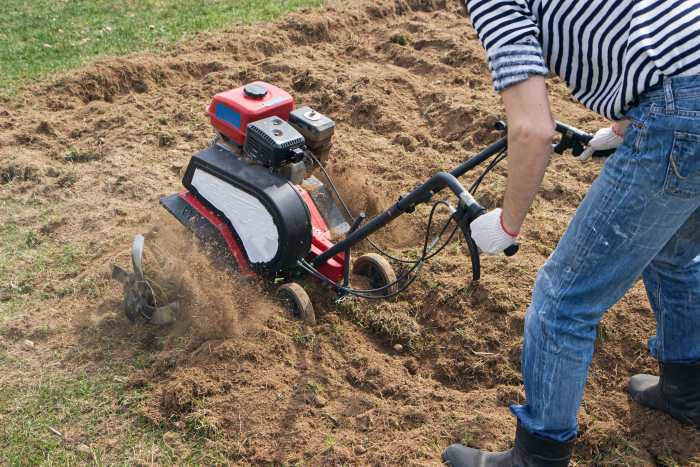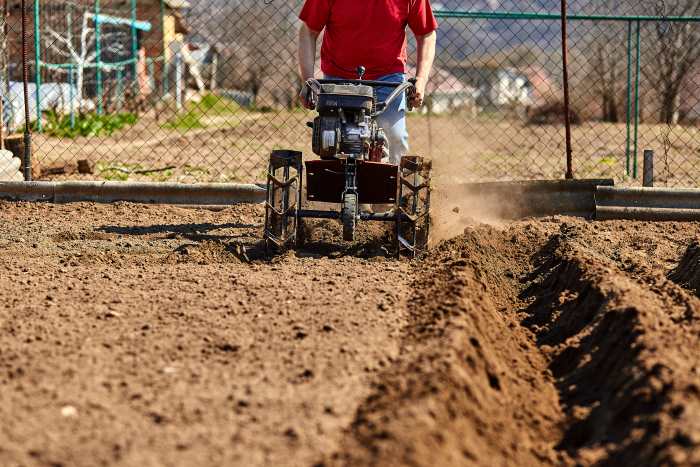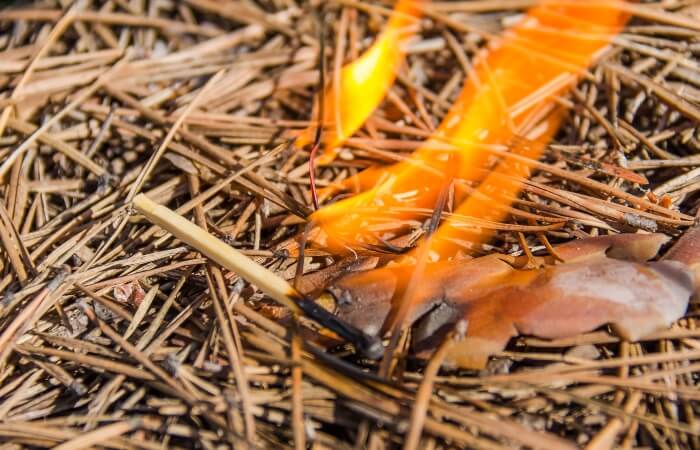Growing fresh vegetables and flowers yourself is a rewarding and money-saving venture.
But, to start, you’ll most likely need to buy or rent some equipment to prep your soil for planting.

That’s why you must understand the difference between tiller and cultivator equipment so you can use the right tool to loosen and amend your garden soil.
In this guide, I give you all the “dirt” on cultivators and tillers, and how to use them. So keep reading!
What Is A Tiller

A garden tiller (or rototiller) is an electric or gas-powered machine with hard metal blades made to tear up hard soil and break it into smaller clumps of soil. This is also known as rototilling ground.
The blades curve inward at the ends and slice through dense patches of weeds, grass, or roots, making it easy to start new garden plots or planting beds on your property.
You can run a tiller over an area repeatedly to further break down big lumps of dirt, but don’t expect this tool to produce fine soil texture.
There are two styles of garden tillers. A front-line tiller is great for medium to small-size gardens that have average soil composition.
Front-line tillers have the wheels behind the tines, so it’s easier to move the unit in any direction during use. The tiller size is also more compact, so storage and transport are more manageable.
Rear-tine tillers are for large areas with very rocky or hard soil. The wheels on this garden tiller are in the front, and the unit overall is larger, heavier, and more powerful than the front-line model. The design makes the unit harder to maneuver about the garden.
Related | How To Separate Rocks From Dirt
What Is A Tiller Used For
Tillers are best for:
- Breaking up tough, untouched soil
- Tearing through weeds, rocks, and roots
- Grinding up/removing weeds
- Breaking ground
What does a tiller do?
Tillers are very effective as a “rough” soil treatment. The machine digs into tough soil and lifts clumps of dirt to the surface.
The design helps create better soil texture and aids in aeration, but most tillers will not produce a soil texture ideal for planting vegetables and flowers.
Tearing Through Tough Debris
Tiller blades can slice through tough foliage and even small root systems. When you need to turn over plots of land full of grass, weeds, or baby saplings, a tiller is a good machine to use.
While you may find debris may snag in the tines, most of the time, large chunks of roots or weeds will come out and lay on the surface for easy removal.
Weed Destroyer
Tiller blades can grab weeds and pull them out as the machine travels over the ground.
If you continue to pass over the ground in different directions, the weeds will end up in shreds and incorporate into the broken up soil.
Related | Best Weeding Tools
This process can improve the soil texture and nutrient levels at the same time you’re are prepping the soil for planting.
Many models of tillers have adjustable blade depths, so you can also use it to scrape the surface weeds off the land instead of digging in deep.
Best Time To Use A Tiller
It’s best to use a tiller in the garden before planting season to break up weeds and compacted dirt. Run a tiller over dry soil, since wet soil will clog up on the tines and create a mess.
What Is A Cultivator

A cultivator is a farm or gardening implement made for secondary tillage of the soil.
Some garden tool manufacturers combine the jobs of a cultivator and tiller into one piece of equipment, leaving you with mediocre results for each specific task.
That’s why serious gardeners opt to own a true cultivator along with other garden equipment since the tool is invaluable during the growing season.
The machinery has a frame with shanks or teeth around a long cylinder that pokes then stirs up the soil as it rolls over it.
The teeth of a cultivator are close together, which aids in clearing the soil of debris.
You can use a cultivator both before and after planting for the many uses I discuss below.
There are several sizes available, with most home gardeners using a powered push-behind machine that is easy to operate in smaller spaces.
You can also purchase pull-behind models made to attach to your riding lawn mower or tractor and non-power hand-held cultivator tools.
Related | Bush Hog vs Finish Mower
What Is A Cultivator Used For?
Cultivators have many uses in the garden both before and after planting like:
- Prepping soil
- Removing or burying weeds
- Sculpting beds or rows
- Aeration
- Soil preparation
What does a cultivator do?
Cultivators break up compacted soil so water can penetrate down to plant roots. The tool busts through clumps of dirt so that the ground is softer and easier to work with.
Cultivators also evenly mix compost and fertilizer into the soil so your garden plants will thrive.
Related | How To Add Compost To Existing Plants
Cultivators also help clean the dirt of large pieces of debris, like sticks, weeds, roots, and garbage.
Weed Control
A cultivator has teeth made to grab and remove entire broad-leaf weeds (roots and all) as they travel over them. This feature reduces the need for you to get down and pull weeds from your garden.
For smaller weeds, the cultivator tears them from the surface and turns them into the upper few inches of soil.
Turning the plants into the soil makes it quick to control weed growth over large patches of your garden like between rows. The incorporated weeds also add nutrients back into your garden soil.
Making Rows
Many cultivator models have interchangeable attachments like discs or blades made to plow garden soil into rows.
Related | Disc Harrow vs Tiller
Disk attachments also create trenches to line up perfect rows of seeds. You can then push the furrow of dirt next to the trench over the seeds for quick planting.
Aeration
Cultivators excel at breaking up the dirt in such a way so that it brings beneficial aeration to the soil. Proper aeration is necessary for healthy plant and root growth.
Related | Best Compost Aerators
Best Time To Cultivate
Always use a cultivator when the soil is slightly damp for best results. Parched soil will be difficult to break up and could even bend the metal teeth.
Wet soil, especially those with high quantities of clay, will form large, compacted clumps that will dry out and inhibit the growth of plants.
In Summary
I hope this guide explains the difference between tiller and cultivator machinery so you can select the best tool for your gardening needs.
Both tools have their place in home gardens, but I believe for optimal garden dirt, there is no competition between a cultivator versus a tiller.
The cultivator is the clear winner since it provides a more useable soil texture.
The more you know about gardening equipment, the more successful you’ll be growing abundant flowers and vegetables at home!












